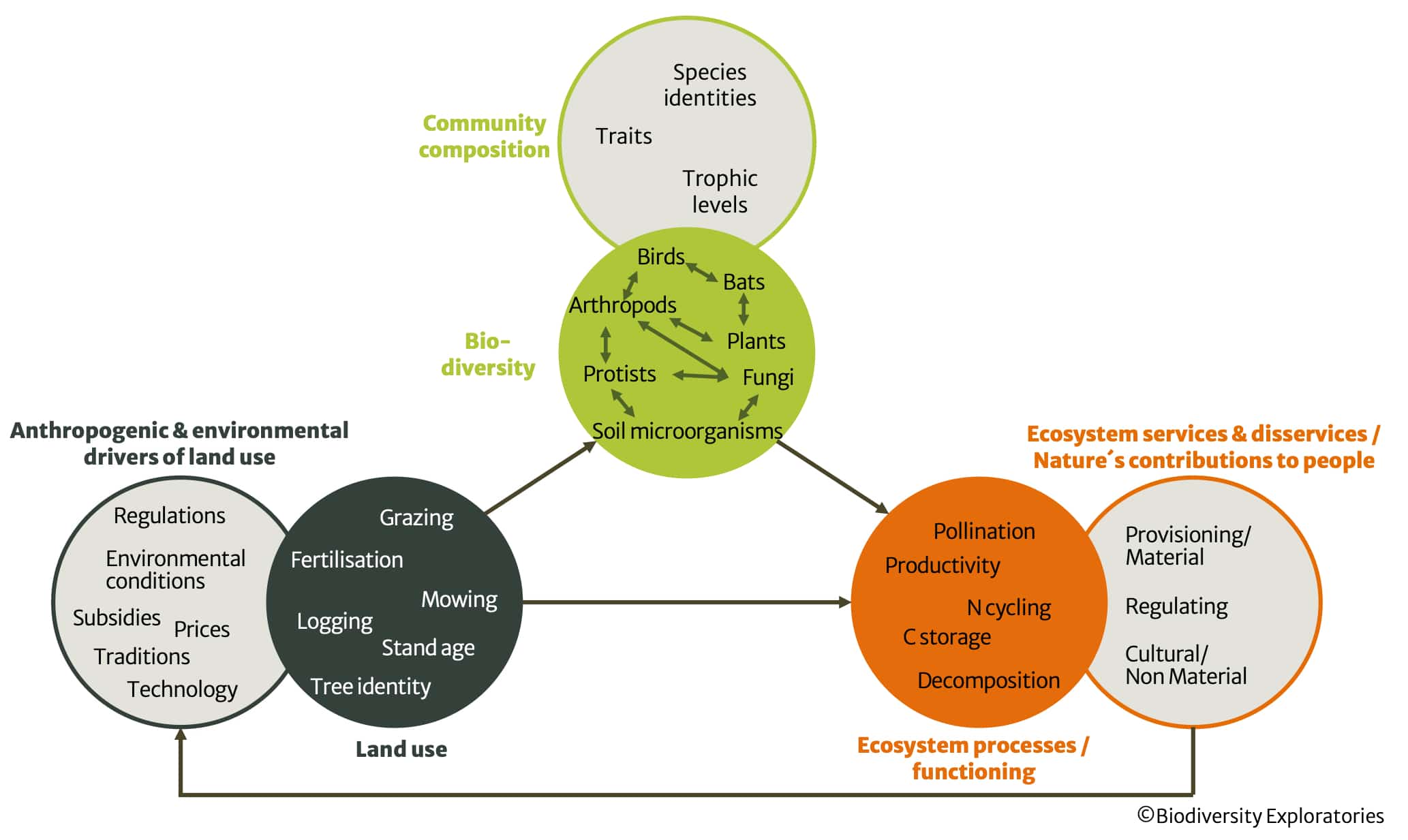Research objectives and background
Our interdisciplinary research examines …
- how the form and intensities of land use affect biodiversity and ecosystem processes
- how different components of biodiversity interact
- how different components of biodiversity influence ecosystem processes and ecosystem services
For biodiversity research, we established three large long-term study areas in Germany in 2006-2008, thanks to funding from the DFG as part of the Initiative for Biodiversity Research. They are called Biodiversity Exploratories instead of descriptive observatories.
Objectives
Analysing the dynamic feedback loops between land use, the diversity of genetics and species, and biological interactions and ecosystem service in real landscapes is the overarching goal of our research platform. To this end, we use a variety of methods: monitoring approaches as well as measurements of functional diversity in experiments. A new and innovative challenge of the project is to integrate social science studies that are linked with natural science results to map the entire nature-society relationship (see figure).
Background
That changes in land use and its intensity can have a negative impact on biodiversity has been proven by the World Biodiversity Council (IPBES). For some groups of organisms, the effects of land use are already well studied, but for others they are still insufficiently researched. In particular, the interaction of the diversities of individual groups with each other and the response of the respective genetic diversities to land use changes is incomplete. The functional significance of biodiversity for natural systems is also unclear, as various management strategies overlap the effects. We have therefore set ourselves the task of gaining scientific knowledge on this and have developed a special research design for this purpose.










